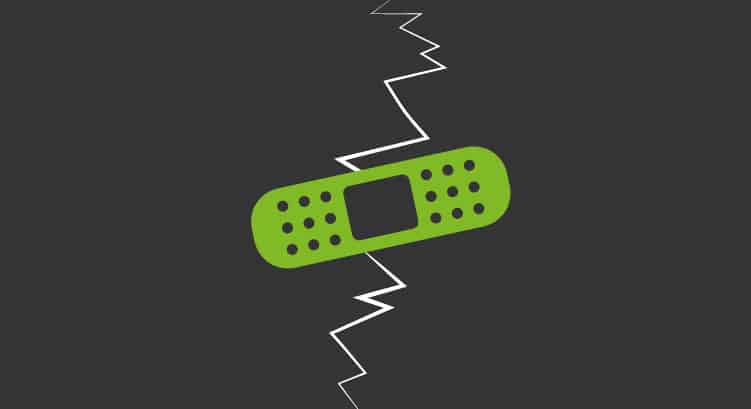What is a patch? the perfect tool for mending programs
If anyone asks: what is a patch? we have to abandon the semantic field of piracy and go to serious and technical things, so to speak.
What is a patch?
Until a little while ago, a patch was nothing more than a piece of cloth used to cover imperfections of clothing or an accessory for our pirate friends. Well, in general, a patch is “something to cover up an existing flaw or imperfection“. That is why this term began to make sense also in the world of new technologies, particularly in computer terminology and more specifically in the world of programming.
We will try to provide a suitable definition.
Patch: A patch is a “package” of code used to improve a program, fix bugs, introduce new features or any other change to an existing program.
What is a patch? Different types
The different types of patch can be divided for two different reasons. On the one hand, we can divide patches by size or by purpose.
First, let’s talk about the division by size. When we make a program, it is usually followed by the name of the version, such as: Program v 3.2.121. These numbers specify what changes have been made to the program since its inception. The further to the left the number change, the greater the patch that has been applied to the program. Following the example, 3 large patches have been applied, within the last large patch 2 intermediate patches have been applied, and within the last intermediate 121 light patches have been applied.
And how do you tell the difference between one patch and another?
There are several criteria that can lead to a patch being of one type or another; it is usually the program development team that decides on those criteria. Generally, “light” patches are those in charge of small bug fixes, “intermediate” patches are more relevant to security and performance, and “large” patches refer to the introduction of many new changes or features.
Second, let’s talk about splitting patches by purpose. Depending on the purpose of the patch may be:
Debugging Patches: The purpose of this type of patches is to repair bugs due to programming errors made by the development team and that were not detected in its testing stage. These bugs can be visual or functional errors, which do not critically affect the program.
Security patches: The purpose of this type of patches is to solve security problems of the program. This type of patches usually occur in those programs that interact with the Internet or which contain sensitive information of the user who uses them.
Update patches: The objective of this type of patches is to introduce new features, make improvements in the algorithms used or optimize the resources used by the program. This type of patches tend to be heavier than the rest, because the code to be injected into the program is larger, thus having to include new branches of code to the existing one.
Translation patches: The objective of this type of patch is to introduce the possibility of changing the configuration of the patched program to a new language.
Pirate Patches: Those worn on the missing eye of the pirates. Alert: You should never put the patch over the good eye. It can cause reversible blindness.
What is a patch? Pandora FMS and its patches
Now let’s see our case, Pandora FMS and its patches. Pandora FMS has a monthly release system. What does this mean? On the last Wednesday of each month, Pandora FMS releases a new version in which update patches are introduced, in which bug and error debugging and security improvements are included, being this a “mega patch”. Inside these releases is included:
- Troubleshooting of errors and bugs detected by Pandora FMS users and Pandora FMS hired testers.
- Performance improvements in sectors of the tool whose load is greater, to be able to carry out better monitoring.
- Applying solutions to possible vulnerabilities to increase the security of the tool.
- New features requested by users, as well as features thought by the development and innovation department.
Additionally, and only for very specific cases, specific patches can be applied to customers of the Enterprise version to solve problems related to its monitoring environment, or the urgent need to introduce new features before the next release. All of these client patches are finally included in the next release so that all users can access the changes made.
Once you’re in the middle of this, would you like to take a look around? Would you like to go even further into the world of this technology? You know Pandora FMS, don’t you? Just in case: Pandora FMS is a flexible monitoring system, able to monitor devices, infrastructures, applications, services and business processes.
Do you still want to know more about system monitoring? Luckily, you’re in the right place to learn more. In this blog there are dozens of articles that can introduce you to this exciting world. Here’s a link to our homepage: https://pandorafms.com/blog
Do you want to know better what Pandora FMS can do for you? Find out here: https://pandorafms.com/

I am currently working in computer systems administration. I have been dedicated to it since the beginning of my working life, even in military environments. At some point I would like to write a book of reflections and poetry.
















